Our Journey
Just like the Appalachian Trail, our history is long. But throughout the years, the heart of our organization has remained the same: to protect and manage more than 2,190 miles of the A.T. footpath and its surrounding landscapes.

Relive the Journey


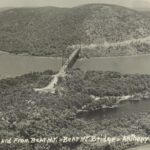
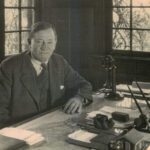
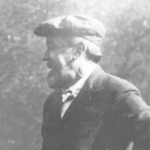

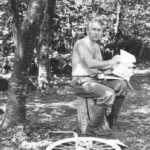
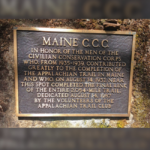

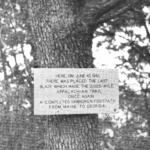
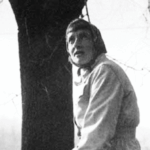

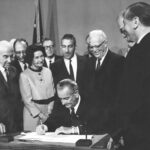
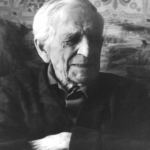



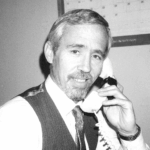


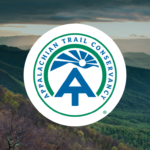
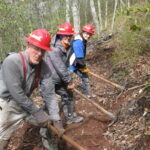
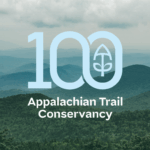
MacKaye Dreams
Benton MacKaye looks south from the treetops on Stratton Mountain and wonders about a trail that runs all the way to the southern Appalachians.

MacKaye Writes
In April Benton’s wife Betty MacKaye dies by suicide. In July, Benton MacKaye begins writing An Appalachian Trail: A Project in Regional Planning and is published in October in Journal of the American Institute of Architects.

First A.T. Sections
First A.T.-specific sections are completed in New York at Bear Mountain by Raymond Torrey.

ATC Established
The Appalachian Trail Conference was established on March 2-3, 1925, as a stand-alone organization to take on the work of building Benton MacKaye’s vision for the Appalachian Trail.

Perkins Steps In
MacKaye’s speech to the New England Trail Conference engages Arthur Perkins to take over the ATC.

Trail-Blazing Builds Momentum
Myron H. Avery takes over leadership of the ATC and accelerates A.T. building efforts using four key steps; organizing a trail club for each section; determining the best route for the Trail; clearing, marking and maintaining the trail; and collecting up-to-date data and maps to publish in ATC guidebooks.

MacKaye Steps Away
MacKaye steps away from the ATC (until the 1960s) after disputes with Avery.

A Fully Connected Appalachian Trail
In 1937, the A.T. is fully connected from Maine to Georgia.
In 1938, the Appalachian Trailway Agreement between the National Park Service, National Forest Service, and the ATC established a protected corridor of land 100 feet on either side of the Trail within national forest and park lands. A hurricane breaks the Trail’s continuity for years.
In 1944, the first A.T. protection legislation is introduced by Rep. Daniel Hoch.

First Thru-Hike
Earl Shaffer reported first “thru-hike” of the entire A.T., a feat that inspired others. Shaffer provided an account of the trail conditions he encountered and later volunteered with the ATC as corresponding secretary, answering letters and providing guidance on long-distance hiking — a service that the ATC continues to provide today.

50’s Restoration
The continuity of the A.T. is restored after hurricane damage and wartime neglect.

First Woman Thru-Hiker
Mildred Norman Ryder becomes the first woman to thru-hike the A.T.
Myron H. Avery dies.

Murray Elected
Stanley A. Murray elected ATC chair; federal protection drive renewed.

First National Scenic Trail
In 1968, the National Trails System Act is signed into law by President Lyndon B. Johnson, making the A.T. a national scenic trail under federal protection. The ATC hires its first employee.
In 1972, the ATC moves to Harpers Ferry, West Virginia.

Benton MacKaye Dies

Federal Protection for A.T. Corridor
In 1976, the A.T. amendments to the National Trail System Act become law, launching one of the most ambitious land-acquisition projects in National Park Service history to create a protective corridor for the Trail and weave together a linear national park. The NPS also creates an A.T. park office under David A. Richie.
In 1978, the NPS land-acquisition project begins in earnest with 913.7 (map) miles protected by federal agencies and 256.1 miles by states. 948.6 miles to go.

First Woman ATC Chair
In 1980, Ruth Blackburn named first woman ATC chair.
Throughout the decade, the ATC, Trail clubs, and new special Trail crews move hundreds of miles of the footpath to optimal, constructed locations as the land-acquisition program progresses. The Trust for A.T. Lands saves key tracts, and unprecedented bridge projects begin in Virginia and New Jersey.

NPS & ATC Collaboration
NPS delegates park-management responsibilities to the ATC, beginning land-management obligations.

Startzel Facilitates Growth
David N. Startzell appointed the ATC’s executive director, beginning 25 years of centralized program growth.

100 Miles Remain
In 1987, Lori “Tenderfoot” Pierce is the first known Black thru-hiker.
In 1989, 850 miles of the A.T. have been protected since 1978 with 100 miles left to acquire.
In 1990, U.S. District Court Judge Charles S. Haight, Jr., broadly interprets the 1968 National Trails System Act to allow acquisitions for Trail values, not just treadway needs.
Throughout the 1990s, the ATC battles ski resorts and highway projects; facilitates nearly $200 million in annual congressional appropriations for land acquisitions (averaging $8 million per year) and major protections, such as Sterling Forest; initiates natural resource inventories; and expands Stewardship Fund with first $1-million bequest.

A.T. Interest Booms
In 1995, Pamela Underhill begins 17 years as NPS A.T. park manager.
In 1998, Congress appropriates $15.1 million to carry combined A.T. land acquisition through 2000, with 15 years of tract-based appropriations to follow. Then Bill Bryson publishes A Walk in the Woods, triggering an explosion in A.T. interest.
In 2000, the White House names the A.T. one of 16 National Millennium Trails.

From Conference to Conservancy
The Appalachian Trail Conference renames itself the Appalachian Trail Conservancy to better communicate the organization’s leadership and responsibility in conserving the rich ecological and cultural heritage of the A.T. and ensuring the world-renowned Trail experience.
The ATC launches programming with teachers and community partners to provide on-Trail experiences and opportunities for youth and young adults to learn about the A.T., outdoor recreation, and public lands stewardship and ultimately cultivate, energize and empower a diverse next generation of A.T. stewards

Last Stretch Protected
In 2014 after decades of negotiations, the last major stretch of the Appalachian Trail — 2.5 miles along the New River to Peters Mountain in Giles County, Virginia — was permanently protected. Volunteers with A.T. Clubs and the ATC’s Konnarock Crew completed the Trail relocation onto land secured by a donated conservation easement.
In 2015, the ATC and National Park Service co-convened the Appalachian Trail Landscape Partnership (ATLP), establishing an expanded network of conservation partners to better protect and connect the wild, scenic and cultural wonders of the A.T. and its surrounding landscape.

Celebrating 100 Years
In 2020, U.S. Supreme Court addresses management authorities for the A.T.
In 2024, the bipartisan Appalachian Trail Centennial Act is introduced to strengthen the public-private partnerships that protect, maintain, and manage the Appalachian Trail and all national trails.
In 2025, the Appalachian Trail Conservancy celebrates its centennial, unveils new vision, brand and rallying call — “Keep the Trail Alive” — represents its steadfast commitment to protecting the wild, transformative nature of the Appalachian Trail and its landscape for all.

Appalachian Trailway News
Special 75th Anniversary Edition
